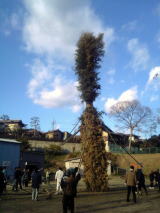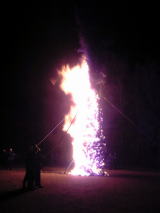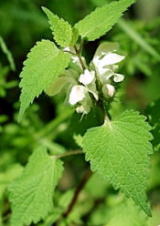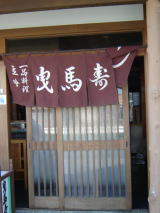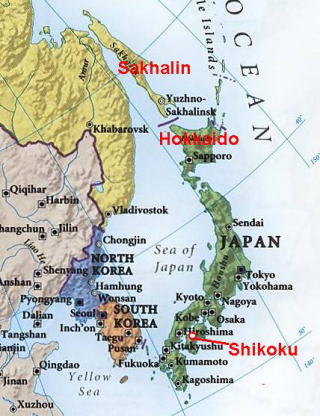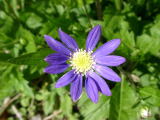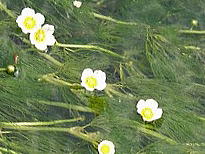(Hora-fuki no karyuudo no niku kai ni keri)
((Nozawa Tatsuyo))
from the braggart hunter
I bought a chunk of
boar meat he shot
(Ochiba-taki yori senkou no hi wo morau)
((Yokota Junnko))
having a light from
fallen leaves' bonfire,
I lit incense sticks
* Senkou: Incense stick is made from ground aromatic tree or Japanese cedar leaf. They put them on Buddhist
grave and Buddhism altar lighted
* Ochiba-taki: Fallen leaves' bonfire had often been seen everywhere
in Japan in beautiful weather in late fall or early winter, which people
swept fallen leaves together at driveway and yard with rake or broom; then
fire them to dispose. Sometimes sweet potatoes are put into the fire to
bake. The neighbors gathered to get warm and chat friendly.
That now became a kind of old and nostalgic scenery, because fire department
strictly rules open air fire in urban area.
(Shishigaki wo hedate te sakugara hanashi ori)
((Okada Boen))
over a boar-protective fence,
old farmers're talking
of their crop prospects
* Recently farmers are bothered with the damage of produce by wild boars
in the mountain area; therefore they build boar-protective fences, which
are usually made of steel wires that are electrified.
(Rittou ya keitai-denwa pachi to toji)
(( Suzuki Takumi))
I snapped my cell-phone
to shut--
early winter
(Nikki kau aoki banana no fusa wo sage) ((Sawayanagi Masaru))
I bought a diary
with a bunch of unripe banana
in a plastic bag
* In Japan, people buy a diary for the coming year at the end of the year.
(Jidanda wo fumi te otosu ya kutsu no yuki)
((Hagiwara Mineko))
I stamp feet
to remove snow
from my soles
* "Jidanda" means "stamp one's feet with chagrin".
(Te-watashi ni orosu iei ya susu-harai)
((Nakagumi Mikie))
taking ancestor's pictures down
to pass one after another...
year-end cleaning
* In Japan, we do general house cleaning at the end of the year, like spring-
cleaning in the U.S.A.
(Wa-ga ryou wa youkan nari ki yamiyo-jiru)
((Yoda Teruyo))
a Yami-yo-jiru party...
I put Youkan
into the soup pot
*Yami-yo-jiru: A kind of surprise -soup that each participant brings special
ingredient and secretly put it into the soup pot, then they taste the cooked
strange soup with blindfold or in the dark conditions.
*Youkan: Japanese sweet bean jelly.
(Ishi-kamado shi te oo-tera no imoni-kai)
((Ikeda Tsurujyo))
built a temporary stone oven...
outdoor cooking party
was held at a Buddhist temple
(Tetsudai to iu jyama no ki shi shouj- hari)
((Kubota Hisayo))
I papered up Shoji screens...
being disturbed by
a cute kid to help me
(Donguri ga uzu no me to naru sentakuki)
((Hyoudou Fumie))
an acorn is
in the eye of whirlpool,
in washing machine
(Kiku-biyori sen-kai kinen no kukai kana)
((Yamazaki Teruko))
fine autumn day--
thousandth Haiku gathering
was held
(Ono ga kage san-toushin ya kan no tsuki)
((Takebuchi Shuusei))
my moonlit shade
looks poorly-proportioned
on the chilly ground
|
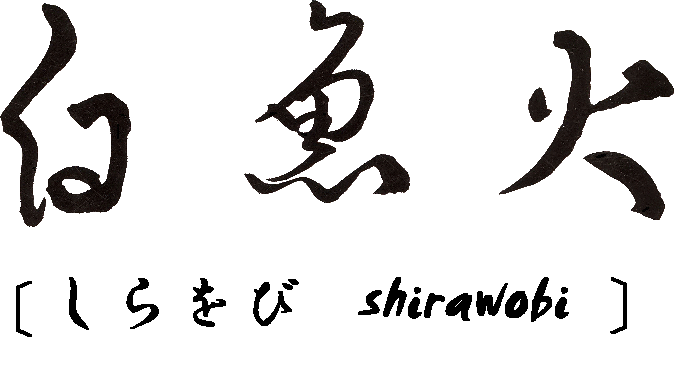
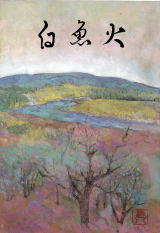
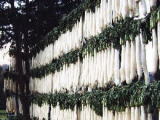
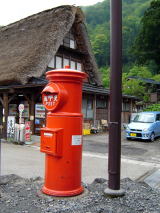
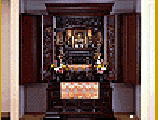
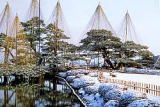

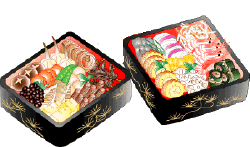 New Year dishes called "Osechi"
New Year dishes called "Osechi"